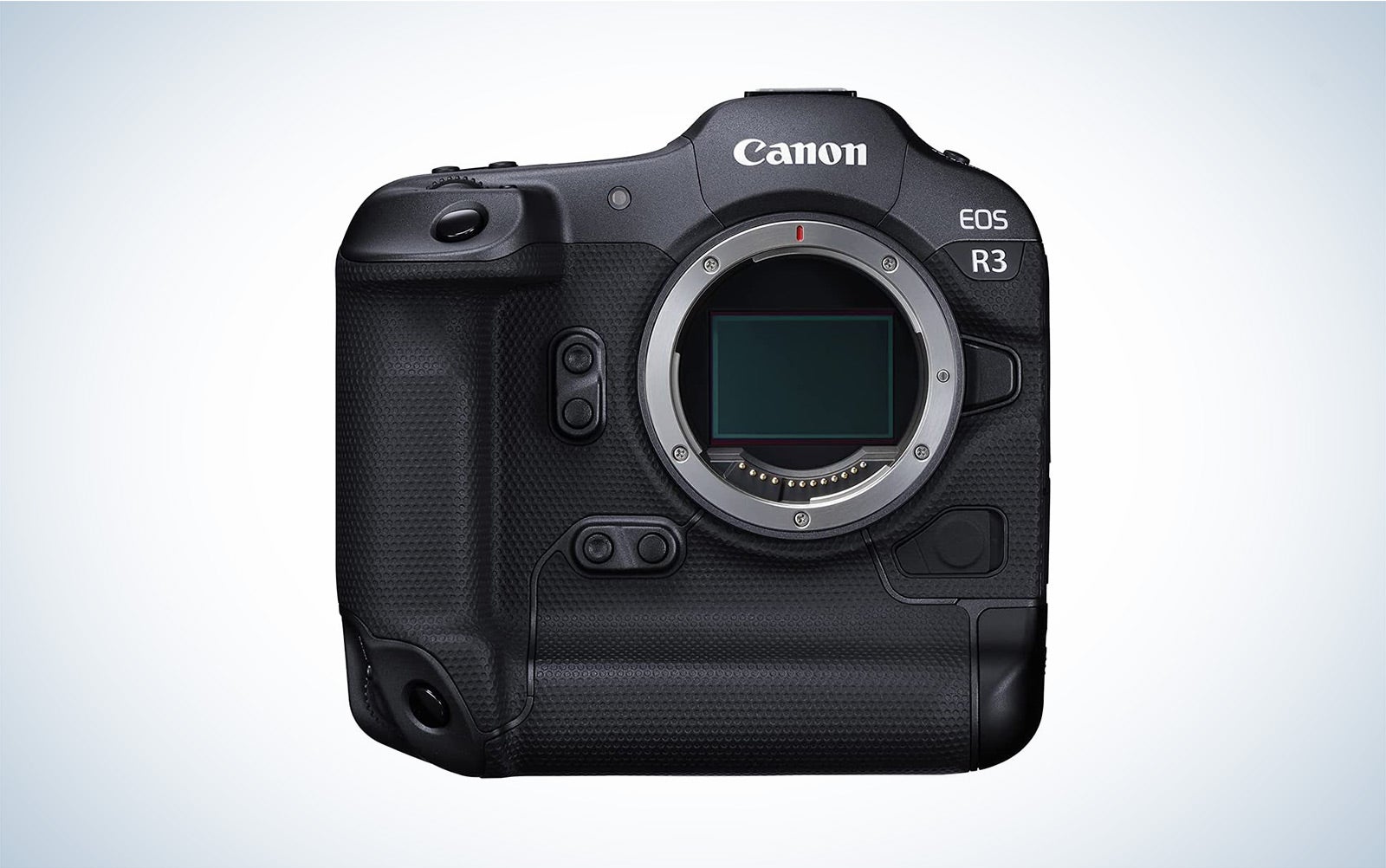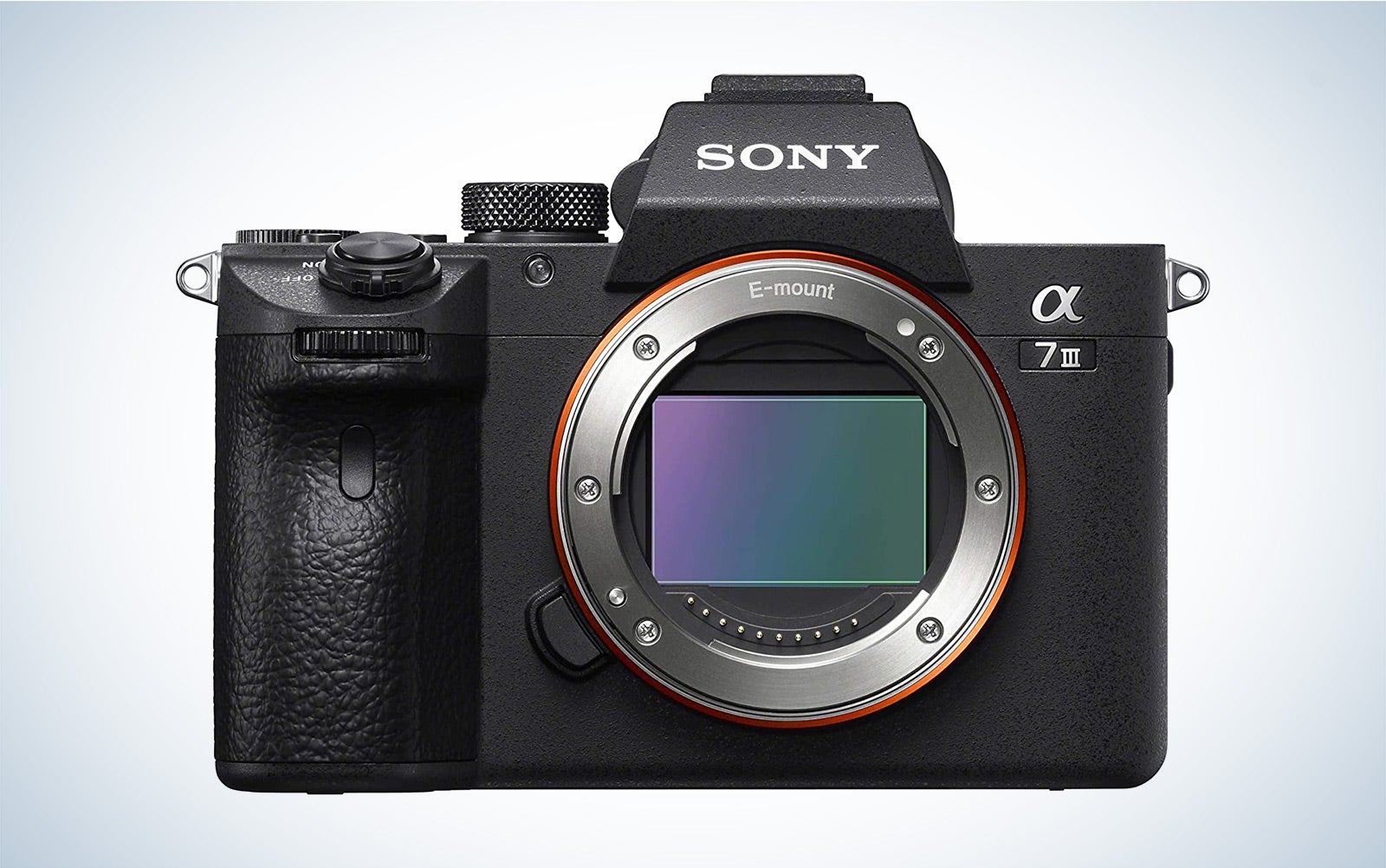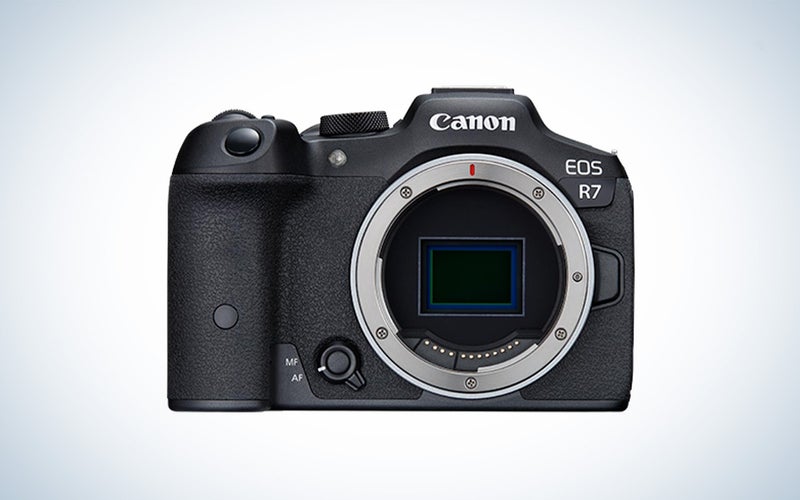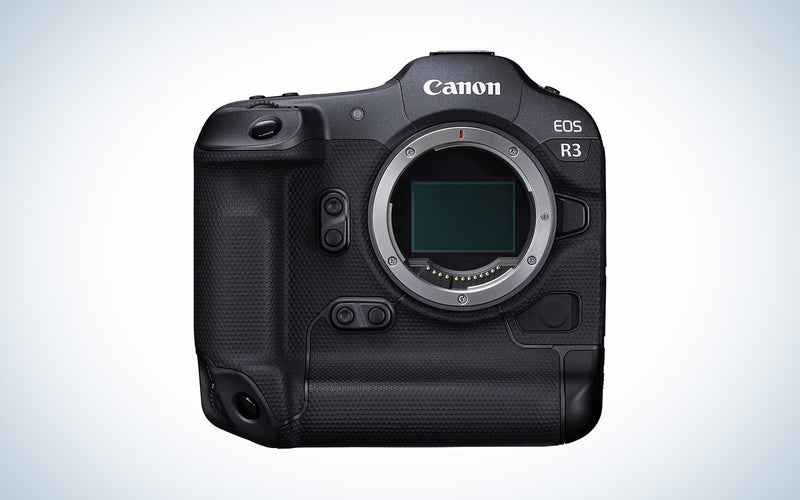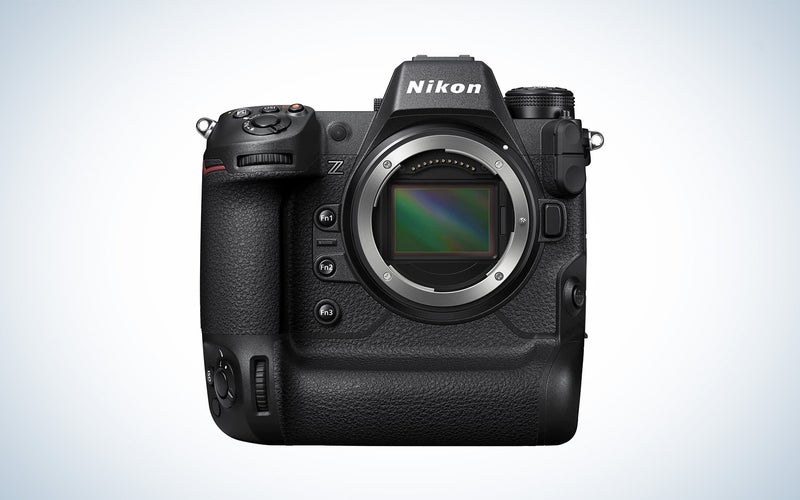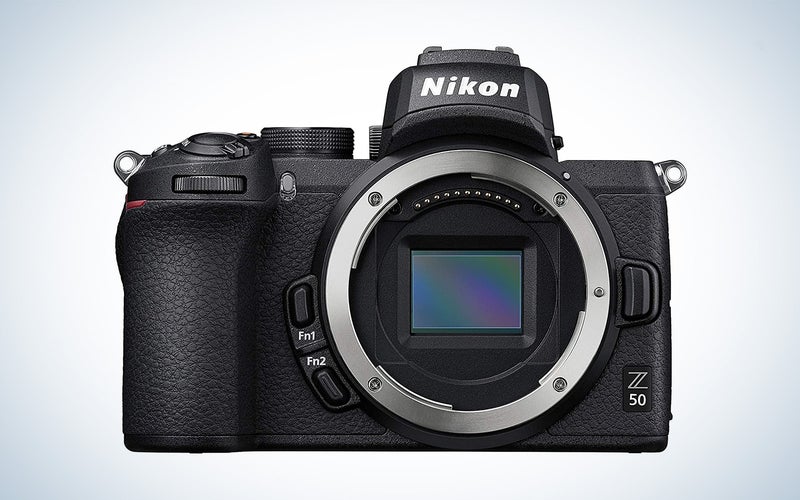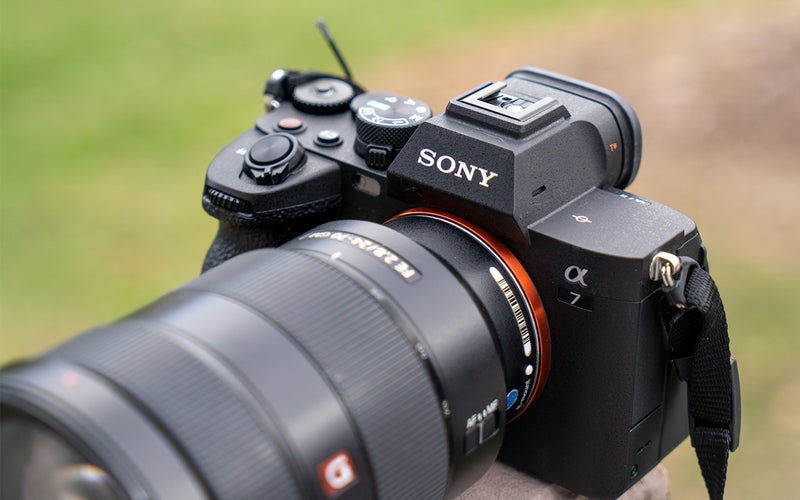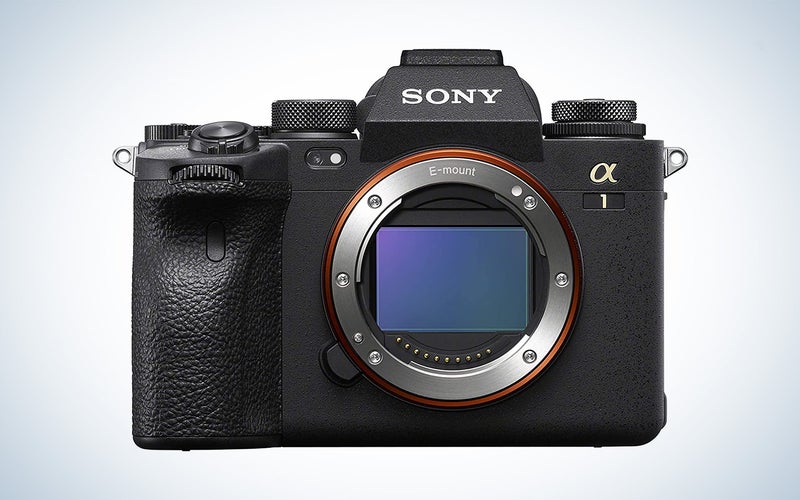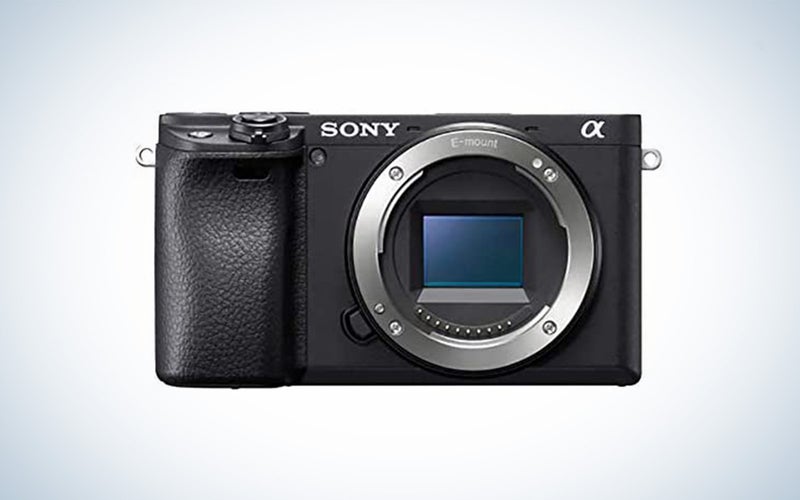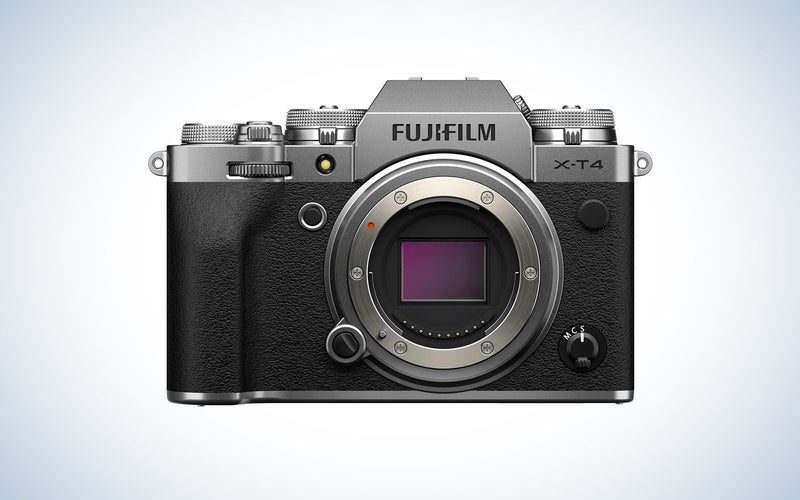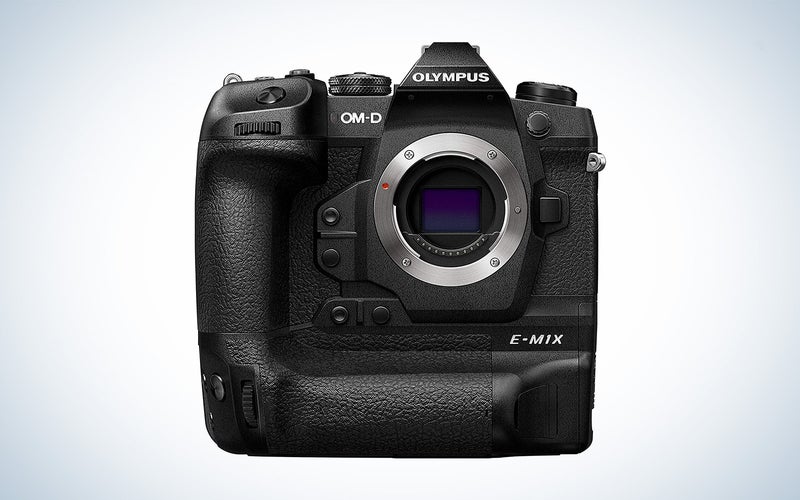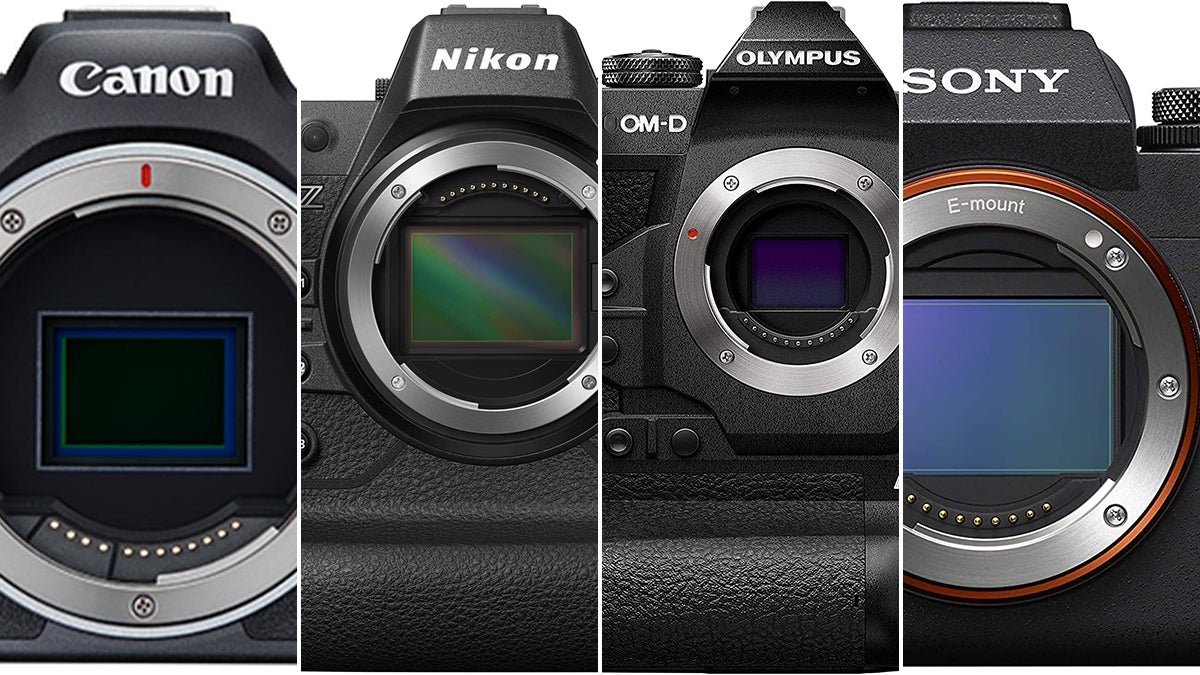
Having the right camera for bird photography will save you many headaches when trying to capture images of the avian species. Though it may seem like a straightforward genre, it comes its own specific challenges. You need to be in the right place at the right time, have the right lens for the job , and choose a camera that is fast enough to snap the images at just the right moment. When done well, you can get some truly magnificent photographs. The best cameras for bird photography will help ensure that your patience pays off.
- Canon: Canon EOS R7
- Canon premium: Canon EOS R3
- Nikon: Nikon Z9
- Nikon budget: Nikon Z50
- Sony: Sony a7 IV
- Sony premium: Sony α1
- Sony budget: Sony α6400
- Fuji: Fujifilm X-T4
- Olympus: OLYMPUS OM-D E-M1X
Things to consider when shopping for the best cameras for bird photography
Camera type
When looking at cameras for any genre, you’ll need to decide between mirrorless and DSLR. However, you may have noticed that all of the cameras on our list for bird photography are mirrorless cameras. That isn’t to say that DSLRs aren’t capable of successfully capturing birds, but the industry is headed towards mirrorless. While there are still loads of lenses for DSLR bodies, companies have started retiring them and focusing on lenses for mirrorless technology.
There are still some benefits to DSLR cameras, such as better weight balance with heavy lenses and better battery life. But for bird photography, there are some key characteristics of mirrorless cameras that make them ideal. Since there is no mirror to flip up when taking an image, they are quieter, meaning you won’t scare away animals with the camera noise. They are also capable of higher frame rates when shooting bursts, which is ideal for erratically moving subjects like birds.
Sensor size
There are three categories to consider when looking at sensor size: full-frame, crop sensor (APS-C), or Micro Four Thirds. Like with mirrorless versus DSLR, there are pros and cons to the different sensor sizes.
When it comes to bird photography, full-frame sensors typically offer better low-light performance. You’ll be able to use higher ISOs with less noise than what you would get from a smaller APS-C sensor. They are also typically higher resolution, which is helpful if you want to print large or crop your images significantly after the fact. With smaller sensors, you won’t have as much wiggle room with cropping since the files are already smaller.
The main benefit for bird photography of both APS-C and Micro Four Thirds sensors is their crop factor. Both of these sensors are smaller than full-frame, resulting in a cropped view. That means you get more practical magnification from the same size lens when used on a smaller sensor instead of a full-frame.
On APS-C sensors, the crop factor is 1.5-1.6x. So on a 1.5x body, a 400mm lens would give you an angle of view that’s equivalent to a 600mm lens on a full-frame body. Micro Four Thirds sensors have a 2.0x crop factor, giving you an 800mm equivalent angle of view. The crop factor can be hugely helpful with wildlife photography because you can save money and buy a smaller lens but still get the same magnification as a more expensive version on a full-frame camera. It will also save you weight and space if you are packing gear for a trip.
Autofocus
As with any type of wildlife photography, you need a fast and responsive autofocus system to capture images successfully. It also needs to be accurate. There’s nothing more frustrating than thinking you nailed the shot only to pull it up on your computer and realize the focus was slightly behind or in front of the subject.
One measure of how good an autofocus system will be is the number of focus points. You want lots of AF points across as much of the sensor as possible. The type of focus points also matters. For moving subjects, you’ll want to look for cameras with phase detection autofocus, as it is much faster to focus. Contrast detection autofocus is more accurate on still subjects, but because the camera has to search for contrast on each pixel, it is a slower autofocus method. More cameras are coming out with hybrid autofocus systems that use both types of detection for the best of both worlds. Some cameras even offer bird-specific AF tracking, which can be very handy if you trust it.
Shooting speed
Since birds tend to move suddenly, and many move quickly, you’ll want a camera with a fast burst mode. If a bird takes flight, you’ll want to be able to fire off a bunch of images in sequence to ensure you capture the bird in the most epic position. Because of that, you’ll want a camera with a high frames per second (fps) number. Ten fps should be good for most situations but look for something faster if you know you’ll be photographing very fast-moving birds.
Be aware that fps is generally adjustable, depending on the camera. For example, many mirrorless cameras have both an electronic and mechanical shutter and have different fps for each. You can also get faster fps if you shoot in jpg versus raw files, with some cameras offering different speeds depending on the chosen file size.
You will also want to look for a high buffer capacity. Buffer capacity refers to how many frames a camera can fire in a burst before it needs time to process those. A higher buffer capacity means you can take more shots in a burst, which will help ensure you get the right shot and aren’t stuck waiting for your camera. It also varies depending on the file size and type you are using, with higher buffer rates for jpg files.
Weatherproofing
Bird photography can take you into some less than ideal conditions for electronics. And really, a camera for any type of wildlife photography should be able to withstand some moisture and dust or dirt. You don’t want to get caught in a rogue rainshower and have your pricey new camera ruined right away. Because of that, we would recommend looking for a camera with at least some weatherproofing. And if you know you will be going on some rugged adventure, look for an option with more robust weatherproofing to protect your investment. The best cameras for bird photography don’t mind spending time in the wild.
Here are our picks for the best cameras for bird photography in 2022:
Canon: Canon EOS R7
Canon
Why it made the cut: The crop sensor will allow your telephoto lenses to go farther, and you get 30 fps for fast bursts of birds in flight.
Key features:
- Sensor: 32.5MP APS-C CMOS sensor
- Continuous shooting: Electronic shutter: 30 fps for 41 frames (raw) | Mechanical shutter: 15 fps for 51 frames (raw)
- Autofocus points: 651 phase detection
- Weight: 1.3 pounds (body with battery and recording media)
Pros
- Fast burst shooting
- High resolution for a crop sensor
- Crop sensor gives your lenses more reach
- Good autofocus
Cons
- Buffer capacity isn’t great
- Electronic viewfinder could be better
For those who are newer to photography, Canon’s EOS R7 is a great option. It has a 32.5MP APS-C sensor, giving you plenty of resolution while still getting some of the perks of the APS-C sensor. You’ll be able to save some money on telephoto lenses since you don’t need to go quite as long with them, thanks to the 1.6x crop factor. For example, the Canon RF100-400mm F5.6-8 is USM will give you the equivalent of 160-640mm, which is a really ideal range for bird photography.
Another feature great for bird photographers is the fast 30 fps when shooting raw with the electronic shutter. The buffer capacity isn’t great at only 41 frames, but you can increase that to 126 frames if you are okay shooting jpegs.
If you are upgrading from a DSLR to this mirrorless option, you will be very pleased with the autofocus. It has automatic subject detection and does a great job of finding a bird’s eye, even when small. There is also autofocus tracking. The camera does a great job of holding focus on the subject even if it leaves the frame and comes back.
Should you want to dabble in videos of birds, the R7 is capable of 4K video at up to 60p. Or, you can oversample to 7K at 30p for even more detail. For slow motion, 120p is supported when you drop the quality to full HD.
The body is dust and moisture-sealed, so you don’t have to worry on your more adventurous birding trips. And there are dual memory card slots so you can automatically backup your images and videos to a second card while shooting. It’s a well-rounded camera with lots of nice features no matter what your level, and it comes at a more beginner-friendly price.
Canon premium: Canon EOS R3
Canon
Why it made the cut: With 30 fps and 6K 60p video, this full-frame mirrorless option is a top choice for professionals wanting exceptional quality.
Key features:
- Sensor: 24MP full-frame stacked BSI CMOS sensor
- Continuous shooting: Electronic shutter: 30 fps for up to 150 frames (raw) | Mechanical Shutter: 12 fps for up to 1000 frames (raw)
- Autofocus points: 1053 phase detection
- Weight: 2.2 pounds (body with battery and recording media)
Pros
- Excellent autofocus
- Fast burst shooting
- 6K video
- Familiar, DSLR-like body for good handling
Cons
- 24MP may be too low for some professionals
The EOS R3 is Canon’s sports-and-wildlife-specific high-end mirrorless camera. It’s essentially the mirrorless successor to the Canon 1D X Mark III and has a similar rear button layout. If you are switching from a Canon DSLR to the R3, the body will give you a nice familiar feel, albeit with less weight. And, like its DSLR counterpart, it has robust weather-sealing for your bigger adventures.
Though many mirrorless cameras have focused on small, compact designs, Canon chose to keep a larger body with an integrated vertical grip. The larger body allows for a high-capacity LP-E19 battery, which provides better battery life than other mirrorless cameras. Of course, if you have a long day of shooting or will be taking lots of videos, you will want a second battery on hand, but it can handle a lot. And, having a spare is easy if you already have a Canon DSLR, such as the EOS-1D X Mark II or Mark III, since it uses the same battery.
Inside the robust body are some impressive features, such as 30 fps for up to 150 raw frames when using the electronic shutter. That’s a huge buffer capacity for such large files. And the electronic shutter allows you to get a shutter speed of up to 1/64,000 sec, so you’ll be able to freeze some fast-moving birds. It’s also no slouch when it comes to video, with 6K 60p and 4K 120p options, both with Canon Log 3.
We would be remiss if we didn’t talk about the autofocus capabilities of the R3. It is truly nothing short of amazing. It can recognize birds, detect their eyes, and track them with phenomenal success. Perhaps most interesting is Canon’s Eye Control AF. The camera can detect where you are looking in the viewfinder and automatically move the autofocus point to that spot. It’ll be faster than manually selecting a spot, which is crucial when dealing with birds. Photographers have said it’s nearly impossible to trip up the autofocus system, even when dealing with tricky lighting conditions.
Though there are lots of things to like about the R3, some may still prefer a DSLR format. If that’s the case for you, the 5D Mark IV is still an excellent camera that will stand up to the task.
Nikon: Nikon Z9
Nikon
Why it made the cut: It’s a professional-level model offering fast burst speeds with high buffer capacity, excellent autofocus, and up to 8K video recording in an ergonomic body.
Key features:
- Sensor: 45.7MP full-frame stacked CMOS sensor
- Continuous shooting: 20 fps for up to 1000 frames (raw)
- Autofocus points: 493 phase detection
- Weight: 2.9 (body with battery and recording media)
Pros
- Excellent autofocus
- Electronic-only shutter for silent shooting
- High resolution
- 8K video recording
Cons
- Rear screen isn’t fully articulating
Nikon was a bit late to the pro-level mirrorless game, but they hit it out of the park when they finally stepped up to the plate. Like Canon, they opted to stick with a DSLR-like body with an integrated vertical grip. It’s still smaller than its DSLR predecessor, the D850, but is still comfortable to hold, even with large lenses.
Nikon was the first to do away with a mechanical shutter and rely entirely on an electronic one, which is capable of up to 1/32,000 sec. As a result, the camera is silent when shooting, perfect for photographing birds. But you can turn on a shutter noise should you miss that click. The lack of a mechanical shutter freed up space for a dedicated sensor shield, which automatically closes when the camera is off. It helps protect your sensor from dust, which is especially useful when changing lenses.
Though the 20 fps is lower than Canon’s R3, the buffer capacity is significantly higher. At up to 1000 frames when shooting raw, it’s more or less limitless in practical application. Another unique benefit of the Nikon is their Pre-Release Burst setting which Nikon added in the firmware 2.0 update. It allows the camera to grab images up to one second before you press the shutter. It can be frustrating to get the timing right when photographing moving subjects, and this gives you some valuable protection for those critical moments.
The Z9 is much higher in resolution than the Canon EOS R3, which many professional photographers will appreciate. You’ll have more wiggle room with cropping, a helpful thing with bird photography. You won’t need to worry about getting super tight compositions in camera and then having a bird move out of it but instead can give some space and crop later.
If you’d prefer to stick with a DSLR, the D850 is still a powerhouse of a camera for wildlife photography. And it’s significantly more affordable than the Z9, meaning you can get a pro-level camera at a lower price point.
Nikon budget: Nikon Z50
Nikon
Why it made the cut: It has a more approachable price point with 4K video and excellent dynamic range in a very travel-friendly body.
Key features:
- Sensor: 20.9MP APS-C CMOS sensor
- Continuous shooting: 11 fps
- Autofocus points: 209 phase detection
- Weight: 4.76 ounces
Pros
- 4K video
- Very lightweight and compact
- Weather-sealed
- Great dynamic range
Cons
- Single UHS-I card slot
- Burst shooting isn’t very fast
If you want to jump on the mirrorless train but don’t want a pricey, full-frame version, the Z50 is a great pick. Because it’s a crop sensor, you’ll be able to take advantage of the 1.5x crop factor for more reach on telephoto lenses. Unfortunately, Nikon hasn’t released many mirrorless lenses for its DX format, so you’ll need to rely on DSLR lenses and a converter or FX lenses. If you plan to upgrade to full-frame someday, that might be fine, but it isn’t ideal for everyone.
The body is extremely lightweight at just 4.76 ounces. Heavy telephoto lenses may be a bit awkwardly balanced on it, but it is perfect for travel because of its small size. And it’s weather-sealed for more protection on your trips. In addition, Nikon implemented a new 1,120mAh EN-EL25 battery, which offers solid battery life to keep you shooting longer.
The Z50 is capable of 4K at 30 fps or full HD at 120 fps for slow-motion footage of birds. You can also trim and add effects to videos in camera if you want to share your content faster. For burst shooting, the Z50 is only capable of 11 fps with a buffer capacity of 30 raw files. That is quite a bit slower than others in its class, unfortunately. But, it has excellent dynamic range, so if you need to underexpose to get the shot in low-light situations, you won’t have to worry as much about noise.
The autofocus is solid for its class, with face and eye detection and subject tracking. It isn’t quite as fast as other cameras but is still plenty quick for most applications. While it isn’t a top-tier camera by any means, it is an excellent little body for a great price.
Sony: Sony a7 IV
Abby Ferguson
Why it made the cut: The Sony a7 IV is a seriously impressive camera for both stills and video and has class-leading autofocus for reliably in-focus images, even with moving subjects.
Key features:
- Sensor: 33MP full-frame Exmor R CMOS sensor
- Continuous shooting: 10 fps for up to 828 frames (raw)
- Autofocus points: 759 phase detection, 425 contrast detection
- Weight: 1.4 pounds (body with battery and recording media)
Pros
- Lightweight body with good ergonomics
- Excellent video quality
- Great dynamic range
- Fantastic autofocus
Cons
- Burst rate could be better
Sony’s fourth generation of its a7 lineup brought worthy upgrades to an already successful camera. It is a true hybrid option, with excellent quality and features for both video and stills work. If you are a bird enthusiast wanting to create both types of content, this camera will be a workhorse for you.
One thing that is great about this Sony camera is that it is so customizable. For example, what used to be the exposure compensation dial on the a7 III is now unmarked and can be set to various controls of your choosing. And there are plenty of other customization buttons around the camera to truly tailor it to your shooting style.
Sony has been leading the field in autofocus and continued to do so with this updated camera. It has, what Sony calls, Real-time Tracking AF, allowing you to tap on the screen to select your subject and then half-press the shutter to lock on. The focus will reliably stay on your subject no matter where they move. I did find the focus to be a little finicky in tricky lighting conditions when shooting stills, requiring I switch between settings more than I would like. But, for bird photography, where you are likely in one spot for a length of time, that shouldn’t be much of an issue.
Sony offers a lossless raw format if you want the most processing flexibility. Unfortunately, burst mode drops to 6 fps should you want that quality. Otherwise, you get 10 fps, which is in line with its competitors. And the buffer capacity is 828 raw frames, more than enough for any situation.
Sony premium: Sony a1
Sony
Why it made the cut: The a1 lets you take advantage of Sony’s exceptional autofocus systems in a powerful, higher resolution body, giving you 50.1MP photos and up to 8K 30p video.
Key features:
- Sensor: 50.1MP full-frame stacked Exmor RS CMOS
- Continuous shooting: Electronic shutter: 30 fps for up to 155 frames (raw) | Mechanical shutter: 10 fps
- Autofocus points: 759 phase detection, 425 contrast detection
- Weight: 1.6 pounds (body with battery and recording media)
Pros
- Exceptional, high-res image quality
- Great weatherproofing
- Fast burst rates
- Fantastic autofocus
Cons
- Ergonomics aren’t for everyone
- Battery life could be better
Sony’s a1 is a true powerhouse. It has impressive, class-leading specs across the board. It has a massive 50.1MP sensor that results in beautiful image quality. That high of a resolution will allow you lots of flexibility with cropping as well. And, with the electronic shutter, you can get 30 raw frames per second at the full 50.1MP, provided you are okay with the lossy compression format. Should you want to avoid compression, you still get 20 fps.
As with other Sony cameras, the hybrid autofocus of the a1 is exceptional. It easily tracks fast-moving subjects. And AF works down to -4 EV, which is a full stop more than other cameras, making it superb in low light conditions. Perhaps the main downside is that even though it can track eyes on humans, dogs, and birds, you have to manually select which one you want. If you are strictly a bird photographer, that won’t be an issue, but if you photograph lots of subjects, it gets a bit annoying.
For videographers, you get 8.6K oversampling for 8K video recording. Your bird videos will be impressively detailed. And there are no recording limits, with Sony claiming that you can get longer than 30 minutes for 8K 30p or 4K 60p video. Plus, there’s advanced color control, including S-Cinetone and Hybrid Log-Gamma support.
The camera body has reliable weatherproofing, ideal for your birding adventures. It’s also more than a pound lighter than the Z9 and around a half pound lighter than the R3. Granted, both cameras have an integrated vertical battery grip to improve their ergonomics. But if you like to travel light and fast, the a1 without an added battery grip is a great way to do it.
Sony budget: Sony a6400
Sony
Why it made the cut: The a6400 is an affordable buy with Sony’s impressive autofocus and excellent image quality. It’s also the smallest, lightest camera on our list, making it ideal for travel.
Key features:
- Sensor: 24.2MP APS-C Exmor CMOS sensor
- Continuous shooting: 11 fps for up to 46 frames (raw)
- Autofocus points: 425 phase detection, 425 contrast detection
- Weight: 14.22 ounces (body with battery and recording media)
Pros
- Very affordable
- Fantastic and smart autofocus
- Extremely lightweight and compact
- 4K video
Cons
- No in-camera stabilization
Sony’s a6400 just might be the best budget option for birding. It’s definitely the most compact pick on our list, weighing just 14.22 ounces and measuring only 4.7 x 2.6 x 2.4 inches. While the small size makes it fitting for travel, it’s also a great choice for keeping by your door for some backyard bird photography.
It features a 24.2MP APS-C sensor with a 1.5x crop factor. You won’t have to get an ultra-telephoto lens to get up close and personal with the birds as a result. While there are no lossless or uncompressed raw options, the lossy compressed raws are of fantastic quality, especially for such an affordable camera. And if you don’t want to fuss with raw files, its jpeg quality is also excellent.
Despite the budget price, you still get Sony’s excellent autofocus system found in their higher-end cameras. That includes its Real-time Tracking AF, which follows subjects wherever they move across the frame. Navigating the menus and autofocus options may be a little confusing to start, but once you get it set up, it is reliable, fast, and accurate.
One downside to this camera is that there is no in-camera stabilization. But, most of the telephoto lenses that you’ll need for bird watching will have that built into the lens, so it won’t be a deal breaker. It will impact low light performance if you don’t have a lens with stabilization, so you’ll want to keep that in mind.
Fuji: Fujifilm X-T4
Why it made the cut: It offers fantastic image quality with up to 20 fps and great battery life. Plus, it has very effective in-body image stabilization for better low-light performance.
Key features:
- Sensor: 26.1MP APS-C X-Trans BSI CMOS 4 sensor
- Continuous shooting: Electronic shutter: 20 fps for up to 36 frames (raw) | Mechanical shutter: 15 fps for up to 38 frames (raw)
- Autofocus points: 425 phase detection
- Weight: 1.16 pounds (body only)
Pros
- Excellent dust and splash protection
- Good battery life
- Fantastic image quality
- Effective in-body stabilization
Cons
- No headphone jack
The X-T4 is one of the best APS-C cameras available. Thanks in part to the X-Trans sensor, the image quality is fantastic. It offers great dynamic range with plenty of leeway in the raw files, so you’ll be able to edit away as needed. Fujifilm also includes built-in Film Simulation Modes that make editing your images with classic film looks easy and fast. So it’s a great solution if you want something beyond a raw image but don’t want to spend time editing.
The body has a rugged design with dust and splash protection. It’s got a classic film camera vibe, making it more unique compared to other mirrorless offerings. In addition, you get dual card slots that both support UHS-II for faster performance. Fujifilm also upgraded the battery from the X-T3, improving battery life by almost double.
One excellent feature of the X-T4 is the impressive in-body image stabilization (IBIS). It provides 6.5EV of stabilization when paired with a stabilized Fujifilm lens. That is a huge advantage for the low light conditions you may encounter while birding.
Fujifilm also upgraded the autofocus system from the X-T3, claiming that the tracking success rate is twice as good. It has face and eye autodetect and tracking, but unfortunately, it just works for people. Fujifilm hasn’t implemented various animal tracking options as Sony has. You will also need a newer lens to take full advantage of the better autofocus system, as older lenses will result in slower results.
Olympus: OLYMPUS OM-D E-M1X
Olympus
Why it made the cut: It has the most rugged build of any other camera on our list, good ergonomics with an integrated vertical grip, and an autofocus system specifically designed for bird photography.
Key features:
- Sensor: 20.4MP Live MOS Micro Four Thirds Sensor
- Continuous shooting: 15 fps for up to 103 frames (raw)
- Autofocus points: 121 phase detection, 121 contrast detection
- Weight: 2.19 pounds
Pros
- Five-axis sensor stabilization
- Good subject tracking
- Extensive weathersealing
- Good resolution
Cons
- Large camera for the sensor size
- Pricey
OM Digital Solutions Corp has long been focused on the adventure genre, which has resulted in some of the best weatherproofing of any camera system. When paired with one of their weather-sealed lenses, you have a seriously rugged setup that can withstand whatever you throw at it.
You may expect a smaller sensor size to result in a smaller camera, but that is not the case with the OM-D E-M1X. Instead, it weighs as much as the full-frame Canon EOS R3. And at 5.7 x 5.8 x 3 inches, it is nearly the same size. One perk of the larger size is better ergonomics, making it easier to hold for long periods. Lenses for this system are also typically more compact than full-frame options, which is a benefit.
Though not feasible for moving subjects like birds, the High Res Shot Modes–both tripod and handheld–allow you to get more out of the smaller sensor. In these modes, the camera takes a series of photos while shifting the sensor, combining them to crank out more resolution. You can get 80MP and 50MP raw files with these two modes, respectively.
The autofocus system is fast and responsive and features settings specifically for bird photography. It uses OM Digital Solutions Corp’s Intelligent Subject Detection AF to automatically detect the type of subject, focus on it, and then track it. It even has autofocus sensitivity down to -6 EV, making low-light photography much more feasible. Also ideal for low light is the 5-axis sensor-shift image stabilization system, which provides 7.5 stops of image stabilization.
FAQs
How much does a camera for bird photography cost?
A camera for bird photography can cost you anywhere from around $800 up to $7,000. It all depends on the technology and features of the camera. Entry-level cameras with more basic specs will be more affordable than advanced, professional cameras with top-of-the-line features.
How many megapixels do I need for bird photography?
For most photographers, 15 to 20 megapixels is plenty. However, two reasons to buy a camera with a higher megapixel count are printing large and cropping significantly. The lower MP cameras will easily meet your needs if you are only posting images online, on social media, or even printing small photos. But, if you enjoy printing large or want the ability to crop your images significantly when editing, more megapixels will give you much more flexibility and quality.
Can you buy refurbished cameras for bird photography?
You can absolutely buy refurbished cameras for bird photography. Buying a refurbished camera is an excellent way to save some money. Plus, sometimes, you can find refurbished versions of cameras that are back ordered and currently unavailable, such as the Fujifilm X-T4.
However, you will want to make sure that you are purchasing a refurbished camera from a reputable source. Otherwise, you risk ending up with a broken camera with no way to get your money back. eBay and Amazon Renewed are great sources to look for used cameras.
Is 400mm enough for bird photography?
400mm is enough for bird photography in most cases. It is a good all-purpose focal length for bird photography. However, if you are photographing stationary birds, extra timid members of the avian species, or want close-up portraits, you may want up to 600mm for better results.
Final thoughts on the best cameras for bird photography
Many fantastic cameras are currently available that are ideal for bird photography, whether you are a seasoned pro or a beginner. Finding the right camera depends on the camera system that you prefer, as they all have their own unique features and benefits.
Methodology: How we selected the best cameras for bird photography
Bird photography has some specific requirements for cameras, with burst shooting and autofocus abilities perhaps being the two most essential. Low-light performance and weatherproofing are also critical, as photographing birds will likely involve some adverse conditions at some point. Therefore, we focused on these features when selecting the cameras for this list.
Existing photographers likely won’t want to switch camera systems when looking for a new camera, which is why we’ve selected options from all major manufacturers. We also focused on a wide variety of price points to meet the needs of various budgets as well as experience levels.
The post The best cameras for bird photography in 2022 appeared first on Popular Photography.
